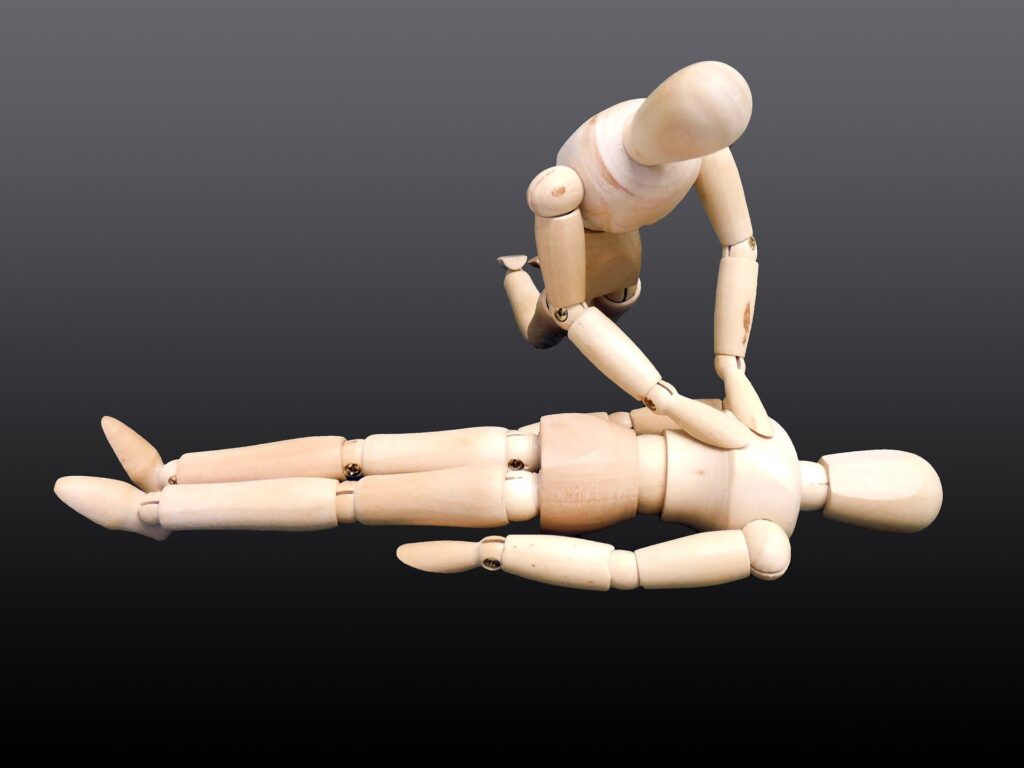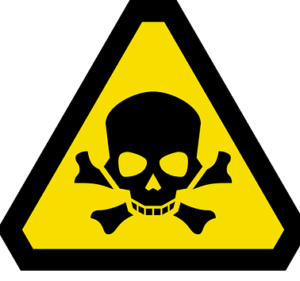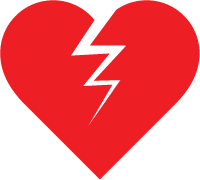Everyone Can Be a Hero – Cardiopulmonary Resuscitation (CPR)

Saving a life is not reserved for healthcare professionals. When someone collapses, the difference between life and death often depends on the presence of a bystander ready to act.
Every person trained in cardiopulmonary resuscitation (CPR) becomes an essential link in this chain of survival.
Read also: Escaping Sudden Death… The Importance of Resuscitation
Someone has collapsed! Would you know what to do?
The scene is striking. A person lies motionless on the ground, frozen in time. Around them, anxious faces meet, but this moment demands more than emotion—it demands action.
Before approaching, take a quick look to ensure the area is safe: no traffic, no fallen electrical wires, no immediate danger.
Once you’ve checked that it’s safe, move closer to the victim. As you reach them, try to get a response: speak loudly (“Are you okay?”) and gently shake their shoulders.
If there’s no reaction, try to stimulate them by pinching the earlobe or rubbing the sternum firmly while calling out louder.

Still no response? There’s no more time to lose—alert emergency services immediately. Every second counts.
Ask someone nearby to dial 911 and report the situation. Also ask: “Does anyone know CPR?”

If no one is trained, call 911 yourself, staying as close as possible to the victim so you can follow the dispatcher’s instructions. Put your phone on speaker mode—this allows you to listen and act while staying beside the person in distress.
The device that can offer the best chance of survival is an automated external defibrillator (AED). Ask someone to bring the nearest one.
If you are completely alone, it is better to stay with the victim rather than walk away to look for help. Stay by their side and continue providing assistance until emergency responders arrive.

When Inaction Is the Real Danger
A common myth persists: “I might make things worse” — for example, “What if I break a rib?”
In reality, during cardiac arrest, the person is already in a critical state. Doing nothing is the real danger.
Attempting resuscitation — even if imperfect — is infinitely better than standing by.
Performing CPR, even clumsily, helps maintain a minimal bloodBlood is composed of red blood cells, white blood cells, platelets, and plasma. Red blood cells are responsible for transporting oxygen and carbon dioxide. White blood cells make up our immune defense system. Platelets contribute to blood flow and gives the heart a chance to restart.
If ribs or chest cartilage fracture during compressions, that is of no consequence compared to the absence of circulation.
The fear of causing harm is natural, but remember: in cardiac arrest, the person is already dying. The most important thing is to keep bloodBlood is composed of red blood cells, white blood cells, platelets, and plasma. Red blood cells are responsible for transporting oxygen and carbon dioxide. White blood cells make up our immune defense system. Platelets contribute to blood and oxygen moving, even partially. That action alone can save a life.
Finally, some people hesitate for fear of being held responsible. Rest assured: the Good Samaritan law, enshrined in the Civil Code and the Charter of Rights, protects anyone who acts in good faith to help a person in danger from legal consequences.
Knowledge That Saves Lives Everywhere
Every trained person has a multiplying effect: they carry this knowledge wherever they go — at work, at home, or on the street — and can, in an instant, become the decisive factor that saves a life.
For this potential to become reality, regular practice is essential. The actions are simple, but they must remain fresh in your memory to be performed without hesitation.
Learning, and then refreshing your training, means giving yourself the confidence and ability to act when it matters most.
As Easy as 1-2-3
- Recognize the emergency and call 911
The first step is to quickly recognize that it’s an emergency and call 911 without delay.
While help is on the way, every second counts.
- Start cardiopulmonary resuscitation (CPR)
Lay the person on their back on a firm surface, then place your hands in the center of their chest.
Push hard and rhythmically until the chest compresses about one-third to half of its depth.
If you have been trained and know how to give rescue breaths, provide two breaths after every 30 compressions. This helps circulate oxygen to the brain, heart, and lungs.
Remember: a brain deprived of oxygen can only survive a few minutes before irreversible damage occurs.
- Use an automated external defibrillator (AED) as soon as possible
As soon as a defibrillator is available, place it directly on the bare chest and follow the voice instructions.
Read also: Automated External Defibrillator (AED)
Don’t be afraid to expose the chest — it’s necessary for the device to work properly.
You can, however, preserve the person’s dignity by covering the rest of their body with a piece of clothing or a blanket.
The Courage to Try: A Life-Saving Act
CPR works like a generator during a power outage — it keeps the bloodBlood is composed of red blood cells, white blood cells, platelets, and plasma. Red blood cells are responsible for transporting oxygen and carbon dioxide. White blood cells make up our immune defense system. Platelets contribute to blood flowing until specialized help arrives.
A training session of just four hours is enough to learn the right actions and gain confidence.
As military surgeon Colonel Nicholas Senn once said:
“The fate of the patient lies in the hands of the first person who provides aid.”
Conclusion
In essence, performing CPR is a civic and compassionate act. It’s choosing to be ready to help — whether it’s a stranger, a neighbor, or a loved one — by taking an action that transcends borders, generations, and walks of life. It’s deciding, when the moment comes, to be among those who give someone a second chance at life.

























